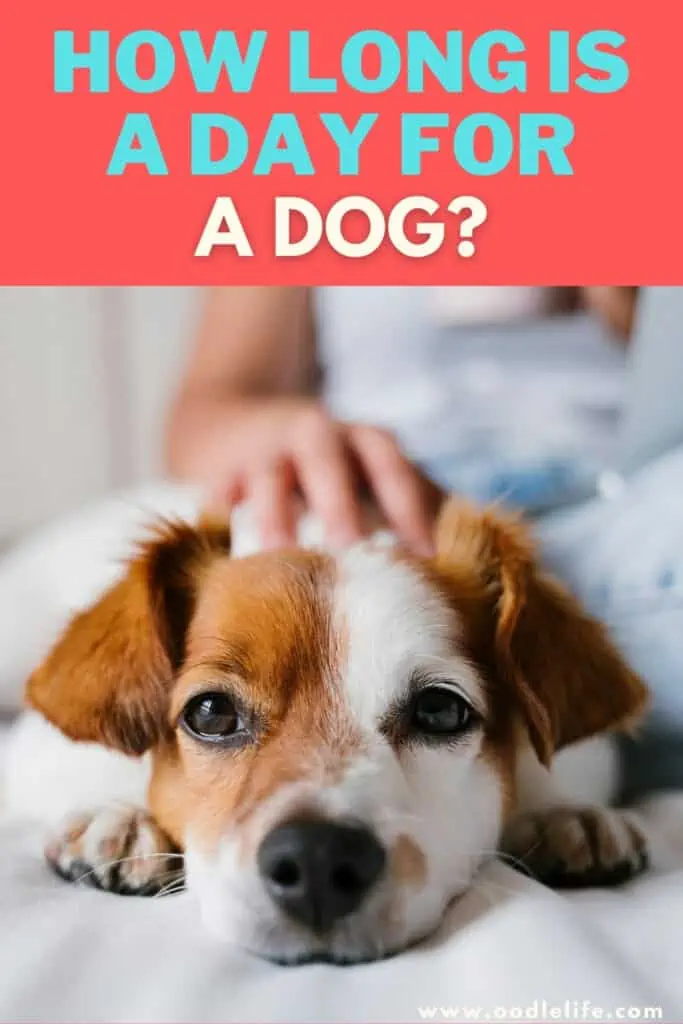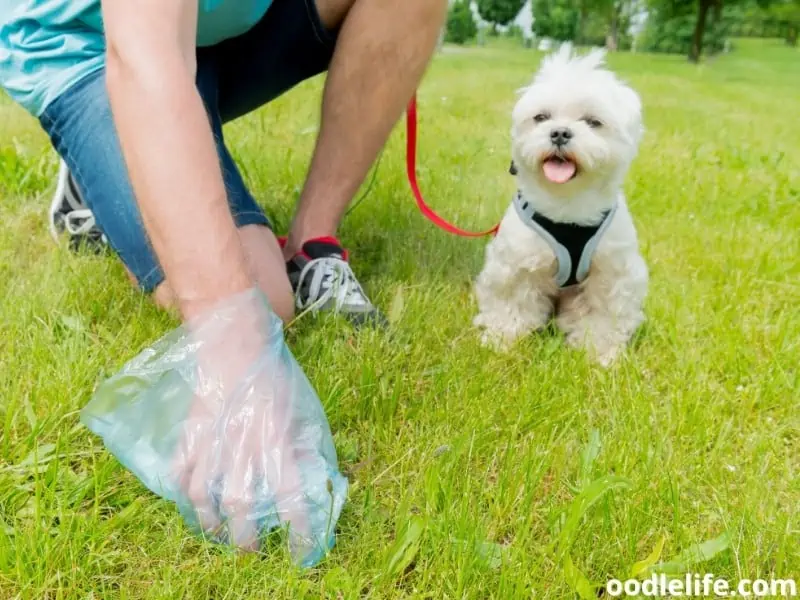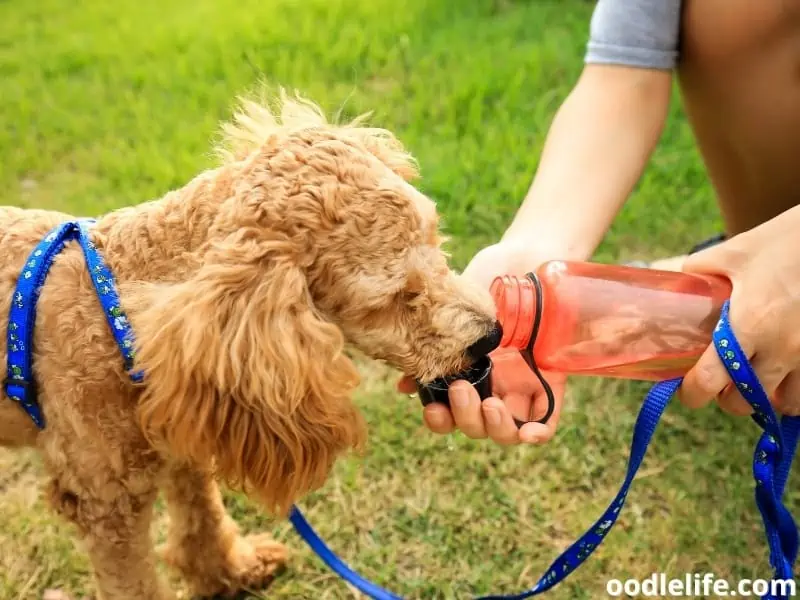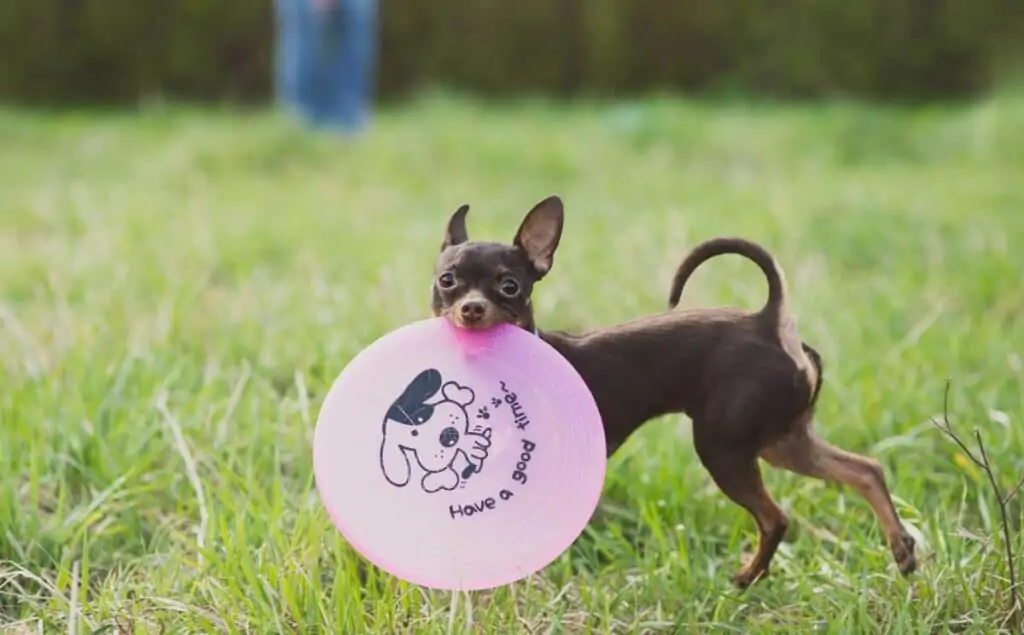How Long is a Day for a Dog?
Do you have a new pooch in your home and you’re curious about their understanding of time? Have you ever wondered how long is a day for a dog? Well, then you’ve come to the right place! In this overview, we will provide the answers you’re seeking.
Keep reading to learn about research studies about dogs’ perception of time and the length of time a typical day is for a dog. We will also provide tips to keep your canine healthy and entertained when they are left alone.

Do Dogs See Time Differently From Humans?
Time is somewhat different between dogs and humans. For example, dogs don’t necessarily have any tools to help them tell time and compare it to the rest of their day. Humans have organized time into numbers and sections.
The most canines can do is pay attention to the daylight hours and the onset of night.
One general theory is that dogs may experience one day as several due to the average lifespan of a typical pooch. Yet, since this theory hinges on life expectancy, that may not hold up concerning how dogs sense time.
You might also see differences in time perception between adult dogs and puppies. For instance, young puppies need at least 18 hours of sleep per day for proper development. That will help puppies stay healthy and develop their immunity, brains, and muscles.

Research Studies into Dogs and Time
Plenty of researchers conducted studies on animals and their perception of time. A study from Northwestern University showed that animals can tell time. Researchers used a virtual reality environment to test mice and their response to time.
They looked at the medial entorhinal cortex and a certain amount of neurons in animal brains that switch on like a clock.
First, they had a door open after six seconds to allow the mice through for a treat. Then, they removed the door from the virtual reality space and watched the mice continue to wait for six seconds before walking through the same area. The animals proved they have an internal sense to tell time.
This set of neurons was unknown before this study. For instance, a dog can tell that it may have taken you twice as long to provide them with food than on previous days.
Another study published in the journal Cell System compared the aging process between dogs and humans, according to the National Institutes of Health. The researchers uncovered that 12 years can correspond to 70 years for a dog. Further, eight weeks of puppyhood can align with the first nine months of a newborn baby.
The researchers used epigenetics and mathematical models or patterns known as “epigenetic clocks” to define the aging patterns and time perception between dogs and humans.
A different study also looked at the duration of time a dog sleeps. Most 16-week-old puppies tend to sleep more than a one-year-old canine. The amount of sleep a pooch gets can impact their overall health, so make sure that your new puppy gets plenty of sleep in the first several months.
Do Dogs Understand Time?
Dogs do not have the same perception of time as humans since they don’t understand clocks or the numerical passage of time. Yet, you can think of pups as passing time similar to people. After all, they may find time going by faster when they’re having fun as compared to sitting around in a crate or a small bedroom with nothing to do.
When you’re gone, a dog will stay occupied based on their needs. If a pup is thirsty, they will drink. If they’re hungry, they’ll get food from their food bowl.
Some repetitive tasks, such as having breakfast and dinner or waiting for their owner to come home, give dogs a better sense of time. However, if a dog is just laying around, they might not realize how much time is passing by. Humans, on the other hand, may think about what they could accomplish in that time instead.

So, How Long Is a Day For a Dog?
All living beings have a circadian rhythm or a biological clock. That includes canines and humans. Essentially, a pup’s body shows them when it’s time to get sleep or when it’s time to wake up and start the day.
You can tell how long a day is for dogs by considering what environment they’re in and how many activities they participate in. The length of the day that a dog perceives will also impact how long you can leave your pooch home alone.
Ultimately, there is no definitive answer to how long a day is for a dog. It may well be that hours for humans feels infinitely longer for pups. Regardless, it’s important to recognize that they have much more nuanced needs due to their different perception of time.

How Long Can a Dog Remain Alone?
You can safely leave your pup home alone for up to seven or eight hours, but you’ll need to take the following factors into account.
Going Potty
How long a dog can go between bathroom breaks will depend on their age. Most puppies at a month old won’t be able to last more than an hour. By one year, you can expect your dog to go up to eight hours without making a mess.
That isn’t usually the case for senior dogs, as they will not have the same control over their bladders.
Still, provide your canine with a place to let them do their business. A doggy door with a fenced-in area is one effective solution. You can also get a neighbor or a dog walker to let your pup out.

Staying Fed and Hydrated
Dog stomachs can empty within a few hours. By the tenth hour, their stomach will be sending signals to the brain that trigger a hunger response. Given that, consider ways to keep them fed if you expect to be away.
For instance, automated dispensers can allow you to feed your dog. These can be controlled remotely (or programmed on a timer) and will ensure you and your pup do not disrupt a familiar routine.
Your canine will also need a bowl of fresh water available when you leave them alone for several hours. Dogs will start showing signs of dehydration within 24 hours if they are not sufficiently hydrated.

Keeping Them Entertained
There is no universal rule as to how long it will take for a dog to get bored. Nevertheless, it’s best to provide entertainment for when they’re alone. That way, you can help your dog to avoid becoming restless or destructive.
Interactive (or chewable toys) can be placed throughout the house. Leaving dog treats under pillows or behind a chair can also give your pup a chance to scavenge around the home and use their strong sense of smell. That will deal with boredom and allow time to pass more smoothly.

Wrap Up
After reading this guide, you should have a better understanding of that age-old question, “how long is a day for a dog?” In some ways, dogs perceive time similarly to humans. Yet, they have different age processes and lifespans, which impacts how long a day is for dogs.
With the right steps that take into account your dog’s needs, you’ll be able to ensure that their days pass by smoothly. No matter your dog’s relationship with time, enjoy life with your pooch for the years they are with you!